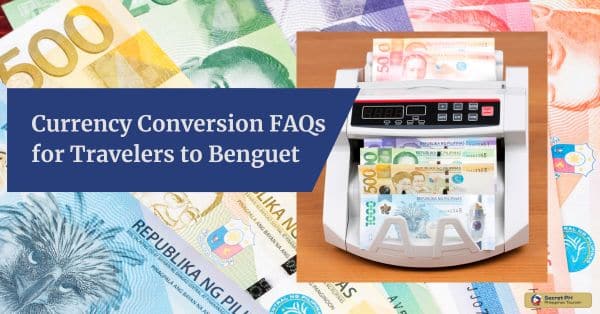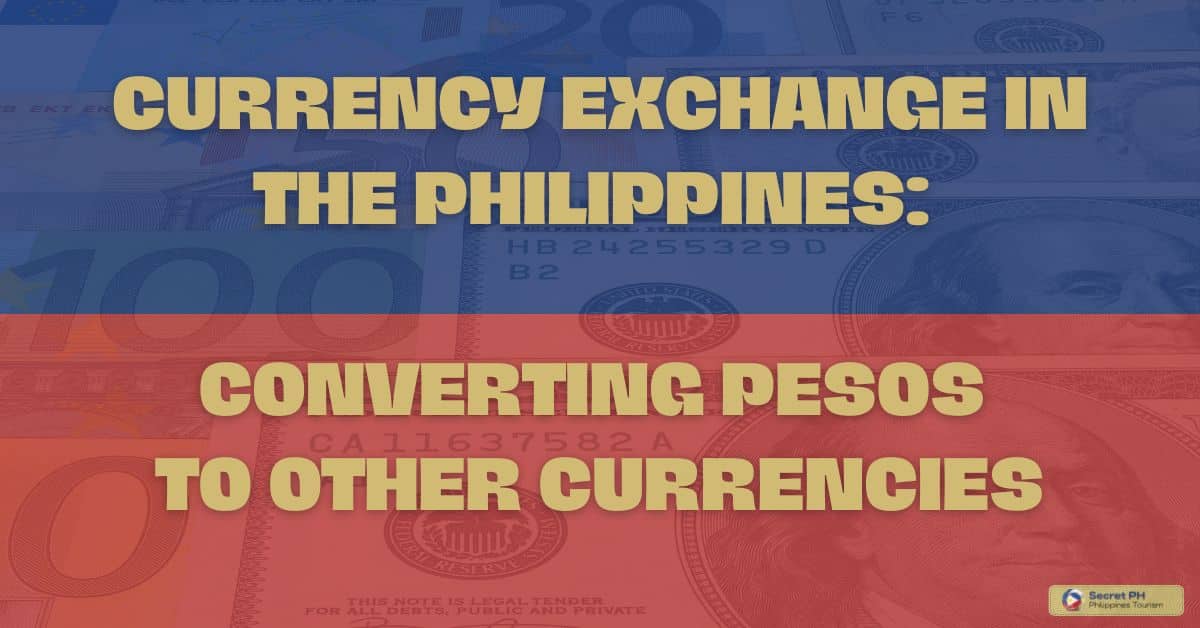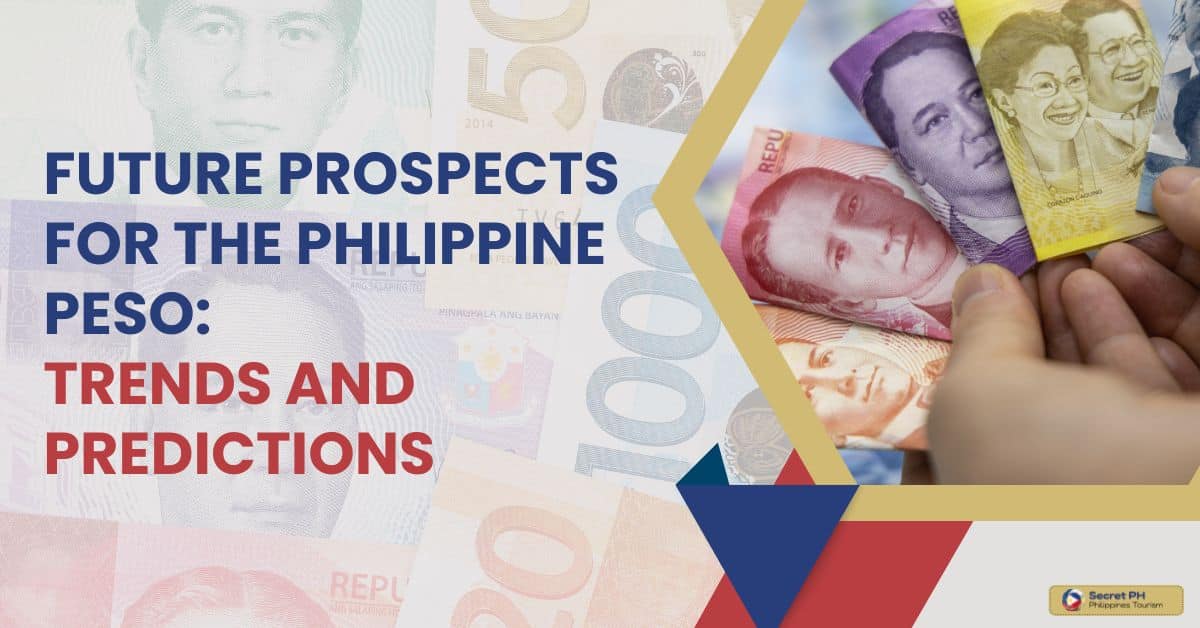Navigating the Philippine Peso: A Comprehensive Guide to Currency Conversion provides a detailed overview of the Philippine currency and its history. This guide covers the essentials of currency conversion, including exchange rates, factors that influence the value of the Philippine Peso, and tips for converting currency.
From discussing various popular currencies around the world to delving into the specifics of Philippine exchange rates, this blog seeks to provide readers with the necessary tools needed to confidently navigate the money exchange market.

Importance of Understanding Currency Conversion
Understanding the concept of currency conversion is essential when doing business or visiting the Philippines. The country is a dynamic one that experiences several fluctuations in its currency. Knowing how to convert Philippine pesos (PHP) into other currencies such as U.S. dollars or euros can help one make more informed decisions when traveling.
Understanding currency conversion is particularly important for those entering the investments space, as it can help inform sound financial decisions and investments that are more reliable over time.

History of the Philippine Peso
The Philippine Peso has a long and storied history. It was first used as a medium of exchange in the 16th century during Spanish colonial rule, when it was traded at an exchange rate of four pesos to one Mexican silver dollar. The level of the peso remained at par until the American colonial period when its value fell to half a US dollar.
The currency continued to decline dramatically in the post-colonial era when its strength was associated with world commodity prices and prolonged periods of devaluation and depreciation occurred. Over time, various denominations were put into circulation and replaced by newer notes printed by local authorities, as well as coins minted by foreign entities.
In 1949, the Central Bank of the Philippines was established and this body became responsible for managing the economy, regulating use of the peso, issuing currency and driving economic growth within the country. Its role remains unaltered until today.
Early forms of currency
In the Philippines, early forms of currency included various items such as shells, beads, and gold nuggets. These items served as a medium of exchange and were used to facilitate trade among communities. The use of these commodities was gradually replaced by the introduction of paper money, coins, and other forms of currency that were issued by the Spanish colonial government.
The peso, a Spanish currency, became the official currency of the Philippines during the Spanish colonial period and has since evolved into the Philippine Peso that is used today.

Adoption of the Philippine Peso
The Philippine Peso was officially adopted as the currency of the Philippines after the country gained independence from Spain in 1898. The Philippine Islands were ceded to the United States as part of the 1898 Treaty of Paris, and the Philippine Peso continued to be the official currency of the Philippines during the American colonial period.

Evolution of the Philippine Peso
The Philippine Peso has undergone several changes and improvements since its adoption as the official currency of the Philippines. During the American colonial period, the Philippine Peso was pegged to the US Dollar, but it was later revalued in the 1960s to maintain its value against other currencies.
The Philippine government introduced new banknotes and coins to enhance the security features of the currency. In recent years, the Central Bank of the Philippines has continued to monitor the value of the Philippine Peso and make adjustments as necessary to maintain its stability.

Understanding Currency Conversion
Currency conversion in the Philippines can be a daunting task. Understanding how to properly exchange one currency for another is not always easy, and there are many important factors that need to be considered along the way.
Learning about the exchange rate between different currencies, as well as factors like transfer fees or what type of currency exchange service is being used can help you make the process much simpler. Taking time to research and understand the details of currency conversion in the Philippines is well worth it since it can lead to more economical transactions in the long run.
Definition of currency conversion
Currency conversion in the Philippines refers to the process of converting one currency into another. It involves determining the current exchange rate between two currencies and using that rate to calculate the equivalent amount in the target currency.
Currency conversion is a necessary step for individuals or businesses that need to exchange money between the Philippine Peso and other currencies, such as when traveling abroad or conducting international transactions.

Factors that influence currency conversion
One of the most important factors that influences currency conversion is the economic environment of each nation. Here are also some of the factors that influence currency conversion:
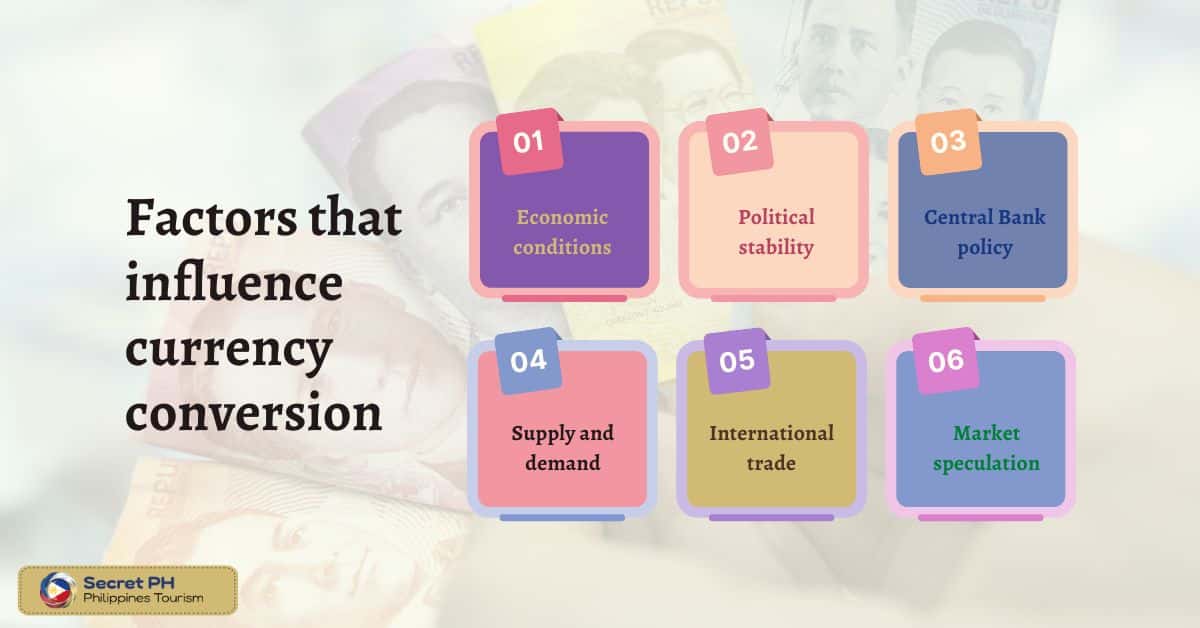
- Economic conditions: The overall economic performance of a country can greatly impact the value of its currency. Factors such as inflation, interest rates, and GDP growth can all play a role in determining the exchange rate.
- Political stability: Political events, such as elections or geopolitical tensions, can also have an impact on currency conversion rates. A stable political environment is often seen as positive for a country’s economy, which can result in a stronger currency.
- Central Bank policy: The Central Bank of the Philippines is responsible for setting monetary policy, including interest rates and currency intervention. These actions can impact the value of the Philippine Peso, and therefore influence currency conversion rates.
- Supply and demand: The demand for a currency will impact its value in relation to other currencies. If there is a high demand for a currency, it will typically be worth more in relation to other currencies.
- International trade: The volume of international trade in a country can also impact the value of its currency. A strong trade position can help to support a currency’s value.
- Market speculation: Speculation in the financial markets can also play a role in determining exchange rates. Large financial institutions and currency traders can influence exchange rates through their buying and selling activity.
Importance of understanding exchange rates
Being aware of exchange rates is critical in today’s interconnected world. Knowing how much a given currency is worth compared to another can and will affect virtually all types of international transactions, such as imports and exports, investments, foreign operations, travel expenses and remittances.
Being savvy and keeping up with the ever-changing exchange rates means being able to make strategic decisions concerning business opportunities worldwide. By understanding the exchange rate between two countries, businesses are able to compare their assets to determine if it is cheaper and more beneficial for them to buy or sell goods in international markets.

Navigating the Philippine Peso
Making sound financial decisions can be difficult, especially when dealing with foreign currencies. Navigating the Philippine Peso for business or leisure can often feel overwhelming. However, with an understanding of the basics, and setting a few goals ahead of time, you can confidently manage your finances and get the most out of your experience.
Understanding the value of the Philippine Peso
When traveling to the Philippines, it is important to understand the value of the Philippine Peso. The Peso is the official currency of the Philippines and is subdivided into 100 centavos. Travelers should be aware of the exchange rate before exchanging their currency.

How to convert foreign currency to the Philippine Peso
Converting foreign currency to the Philippine Peso can be done in several ways, including using banks, currency exchange services, or online platforms.
- Banks: Many banks in the Philippines offer currency exchange services for customers. This can be a convenient option for those who already have an account with the bank, as it allows for quick and easy transactions. It is important to note that banks may charge fees or offer less favorable exchange rates compared to other options.
- Currency exchange services: Currency exchange services are specialized businesses that offer currency conversion services for a fee. They can be found in major cities and tourist destinations. These services typically offer competitive exchange rates and are a good option for those who need to convert large amounts of currency.
- Online platforms: Online platforms, such as PayPal or TransferWise, allow for the conversion of foreign currency to Philippine Peso without leaving the comfort of your home. These platforms often offer competitive exchange rates, but it is important to read reviews and compare fees before making a transaction.
Tips for currency conversion
Managing international finances may seem daunting, but currency conversion doesn’t have to be difficult. In order to ensure that you get the most value for your money, it’s important to familiarize yourself with the basics of currency conversion, and to follow a few simple tips.
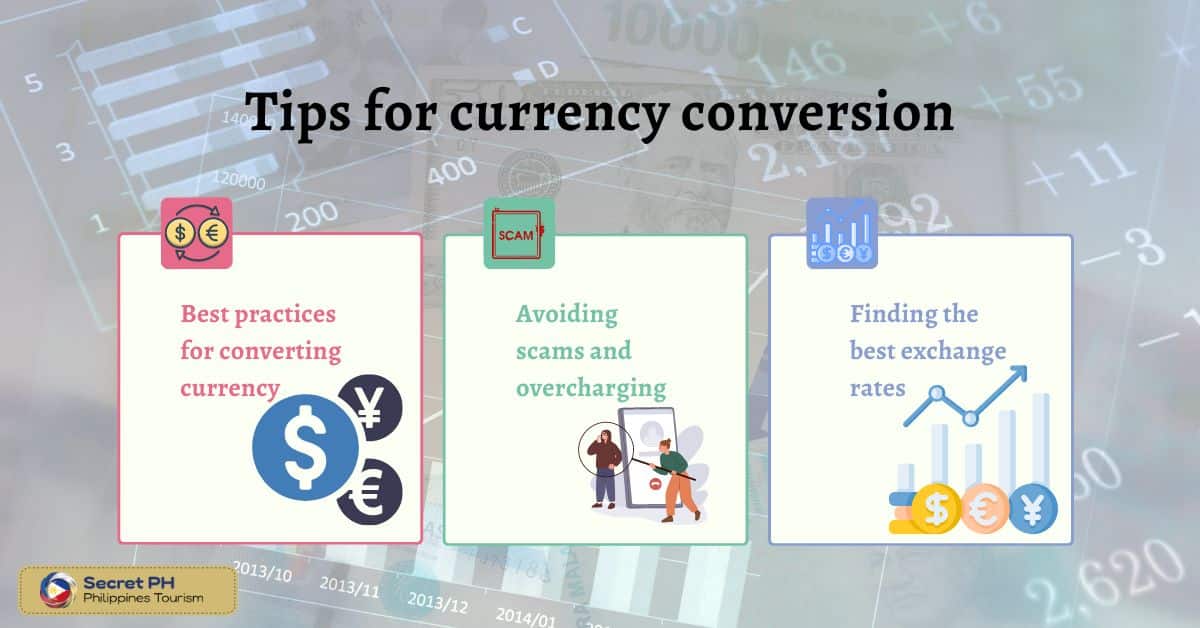
Best practices for converting currency
Taking into account current market rates, understanding applicable regulations and choosing the right technique for conversion are all important elements of undertaking successful transactions involving multiple currencies.
Currency conversion should not be taken lightly – careful planning can maximize returns and minimize losses, whether the focus is on profit or hedging financial risk. Time spent understanding the dynamics of exchange rate markets, investments and currencies will always pay off in future transactions.
Avoiding scams and overcharging
Navigating the current digital world presents a unique challenge. The prevalence of scams and overcharging not only make it difficult to trust companies, but also can force unanticipated financial losses along with emotional strain. As frustrating as this may be, there are preventative steps you can take to avoid being taken advantage of in the marketplace.
Through proper research, a good understanding of what services are offered, and preemptive fact-checking, consumers can arm themselves against any potential skullduggery they may encounter. Taking these protective initiatives will ultimately protect your wallet as well as your peace of mind.
Finding the best exchange rates
With so many options available, it can be difficult deciding how and where to get the most cash out of changing money. To help make the process easier, research is essential. By taking time evaluate different options and understanding the factors that affect exchange rates, finding the best rate possible will save you valuable time and money in the long run.
Common questions about currency conversion in the Philippines
Currency conversion in the Philippines is an important topic to consider when travelling to the country or conducting business abroad. The exchange rate between Philippine Peso and foreign currencies can be an ever-changing figure, so being educated about the latest rates and available services for exchanging money is paramount.
What are the common forms of currency accepted in the Philippines?
The most commonly accepted forms of payment are Philippine peso, US Dollar, as well as various international credit cards such as Visa and Mastercard. Additionally, certain coins or bills that have been used by other countries may also be accepted in certain establishments.
Businesses may also accept payments via direct debit or wire transfers, while fringe alternative payment methods are slowly becoming more common such as cryptocurrency services such as Bitcoin. With an array of options to choose from when it comes to making purchases in the Philippines, it has never been easier for travelers and locals alike to transact efficiently and securely.

How to convert Philippine Peso to other currencies?
People who are needing to convert Philippine Peso to other currencies may find the process daunting. However, there are a few simple options that can help make completing this task easier. Online services and currency converters can quickly and accurately provide up-to-date exchange rates for popular currencies.
Banks will also offer conversion services if necessary. Any fees associated with using these services should be considered before making an exchange. Researching market prices will help ensure any exchange of currency is getting its best value.

What are the fees involved in currency conversion?
Currency conversion has become an essential part of our daily lives due to the increasing global economy. To exchange money from one currency to another, there are often several fees and commissions associated with the conversion.
Consumers must pay a commission fee to their bank or other financial institution for every currency conversion transaction. It is common for corporations or individuals to be charged an exchange rate markup when converting funds internationally. It pays to do research in order to find the best rates and the lowest fees when dealing in foreign currencies.

In Conclusion
It is important to be aware of the different options available when converting currency, as well as the risks and benefits associated with each method. By understanding the Philippine peso and how it is traded in the foreign exchange market, individuals can make more informed decisions when sending or receiving money.

